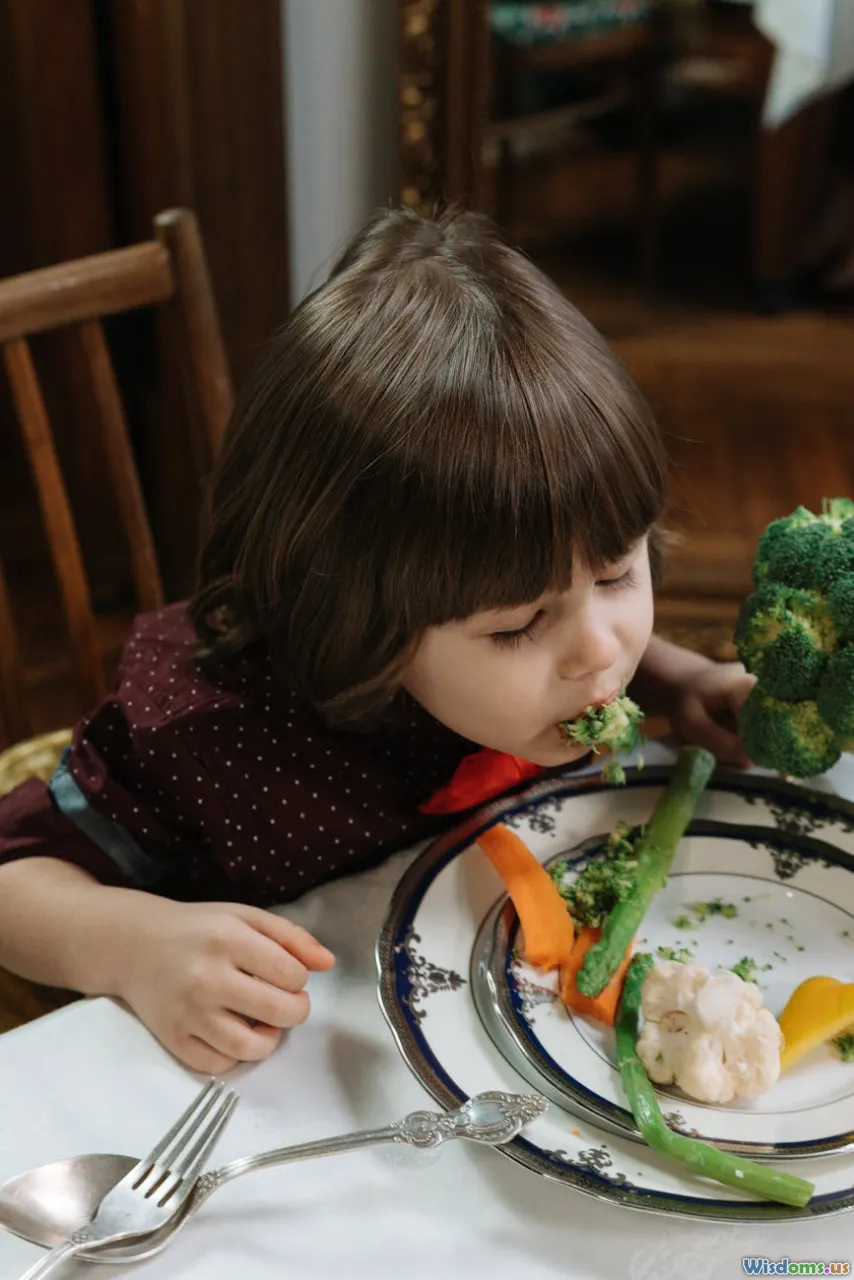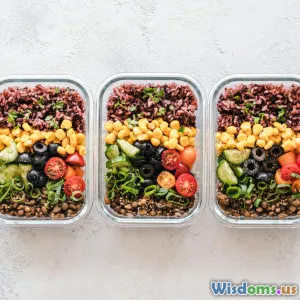
How to Turn Vegetable Haters into Veggie Lovers with These Kid Meals
8 min read Discover creative kid-friendly meals that transform picky eaters into vegetable enthusiasts with practical tips and tasty recipes. (0 Reviews)
How to Turn Vegetable Haters into Veggie Lovers with These Kid Meals
Vegetables are nutritional powerhouses, packed with vitamins, minerals, fiber, and antioxidants essential for a child’s growth and development. Yet, any parent knows the grill of rejection from little ones when you present green beans, broccoli, or carrots. Vegetable aversion is a common challenge, but it is far from insurmountable. The good news? With a blend of creativity, patience, and tasty kid-centric meals, you can morph those pink pouts into bright smiles filled with veggie joy.
Understanding the Vegetable Aversion Puzzle
Before diving into meal ideas, it’s important to understand why children often reject vegetables. Taste, texture, and color are frequent obstacles. Vegetables sometimes have bitter notes due to compounds like glucosinolates, especially in cruciferous veggies such as broccoli and Brussels sprouts. Children’s taste buds are more sensitive; what tastes bitter to them may seem mild to adults. Furthermore, texture preferences vary—some kids dislike the fibrous crunchiness, while others are put off by sliminess or mushiness.
Developmental stages also play a role. Around ages 2-4, children naturally test boundaries food-wise, often rejecting previously accepted foods. This behavior is evolutionarily normal as kids learn to distinguish safe from unsafe foods.
Key Strategies to Convert Veggie Haters
1. Sneak Vegetables into Familiar Favorites
One effective strategy involves incorporating vegetables into meals they already love without obvious signs. For example, pureeing roasted carrots or spinach into a tomato sauce for pasta enhances nutrition without a detectable flavor contrast. Another approach is adding finely grated zucchini or cauliflower to meatballs or burger patties. These covert tactics are subtle yet effective entry points.
Example: In a 2017 study published in Appetite, children exposed to hidden vegetables in familiar dishes increased their vegetable intake over weeks more than those presented with whole vegetables alone.
2. Present Veggies in Fun and Creative Forms
Presentation can be just as important as flavor. Transform vegetables into shapes, colorful skewers, or fun faces on plates. Use small cookie cutters to shape steamed veggies or cucumber slices. A “rainbow plate” featuring a spectrum of vegetable colors — red bell peppers, yellow corn, green peas, and purple cabbage — can intrigue children visually.
3. Involve Kids in Cooking and Selection
Children are more likely to eat what they help create. Inviting kids to pick which vegetables to try at the grocery store and involving them in washing, peeling, or mixing can build enthusiasm and ownership.
Chef and nutritionist Ann Cooper notes, “When kids engage with food preparation early, they receive sensory input and develop greater acceptance.”
4. Gradual Exposure and Repeated Tastings
Don’t be discouraged by initial refusal. Repeated neutral exposure has been shown to reduce food neophobia. Research indicates it can take 8-15 exposures for a child to accept a new vegetable taste genuinely.
5. Flavor Enhancements and Pairing
Using kid-friendly herbs like basil or mild spices like cinnamon and paprika can enhance vegetable palatability. Pairing vegetables with favored dips such as hummus or yogurt-based dressings offers a positive association.
Kid-Approved Veggie Meal Ideas
Here are some practical recipes and meal concepts proven to entice young ones:
Veggie-Packed Rainbow Quesadillas
Ingredients:
- Whole wheat tortillas
- Shredded cheddar cheese
- Grated carrots, zucchini, and finely chopped spinach
- Mild salsa for dipping
Why it works: Melty cheese hides veggies while vibrant colors inside tempt curious eyes. Allow kids to assemble their own quesadillas for added fun.
Mac and Cheese with Cauliflower Sauce
Ingredients:
- Cooked macaroni
- Steamed cauliflower pureed with milk and a splash of cheese sauce
- A pinch of nutmeg for subtle sweetness
Cauliflower’s mild flavor easily blends into the creamy sauce, offering a nutritious twist on a comfort classic.
Mini Veggie Meatballs
Ingredients:
- Ground turkey or lean beef
- Finely grated carrots, zucchini, and onion
- Whole wheat breadcrumbs
- Egg to bind
Served with tomato sauce and whole-grain pasta, these mini meatballs are both fun to eat and nutrient-dense.
Hidden Veggie Pancakes
Ingredients:
- Pancake batter with pureed spinach or pumpkin
- A dash of cinnamon or vanilla
These lend a natural sweetness and vivid green or orange color, making pancakes educational too.
Fun Veggie Skewers
Alternate cherry tomatoes, small cucumber chunks, bell pepper pieces, and cheese cubes. Serve with a favorite dip.
Real-Life Success Stories
Susan, a mother from Portland, shared, “I used to battle dinnertime with my son rejecting anything green. When I started adding tiny shredded carrots into his spaghetti sauce and involving him in shopping, everything changed! Now he asks for broccoli.”
Nutritionists like Dr. Emma Rodriguez endorse these approaches noting, "Food introductions paired with positive experiences are crucial. Making veggies exciting and accessible moves the needle more than mandating 'eat your greens.'"
Conclusion: Cultivating Lifelong Healthy Eaters
Changing a child’s palate doesn’t happen overnight, but it is achievable. Success comes from a balanced mix of strategic preparation, excitement, patience, and understanding the child’s perspective. By presenting vegetables in appealing, familiar, and even surprising ways, your little vegetable hater can blossom into a veggie lover. This journey not only enhances children’s physical health but also fosters a joyful, adventurous approach to nourishment that benefits families for a lifetime.
Remember, the goal isn’t perfection but progress—one colorful, tasty bite at a time.
References and Further Reading:
- Mackey, A. P., & Kenward, J. (2017). Hidden vegetable sauces: effect on children’s vegetable intake. Appetite.
- Ventura, A. K., & Worobey, J. (2013). Early influences on the development of food preferences. Current Biology.
- Cooper, A. (Nutritionist & Author) – Interviews on child nutrition and cooking.
Dig deeper into creative cooking at home and inspire your child to enjoy veggies through play and taste.
Rate the Post
User Reviews
Popular Posts

















